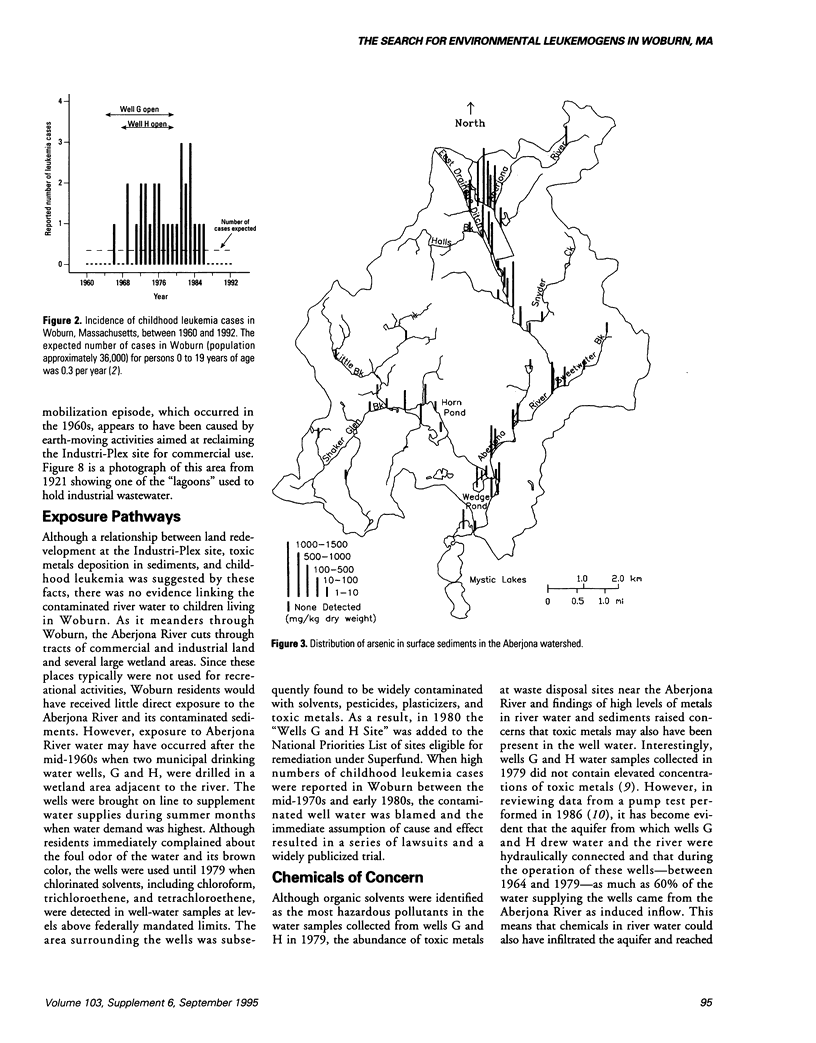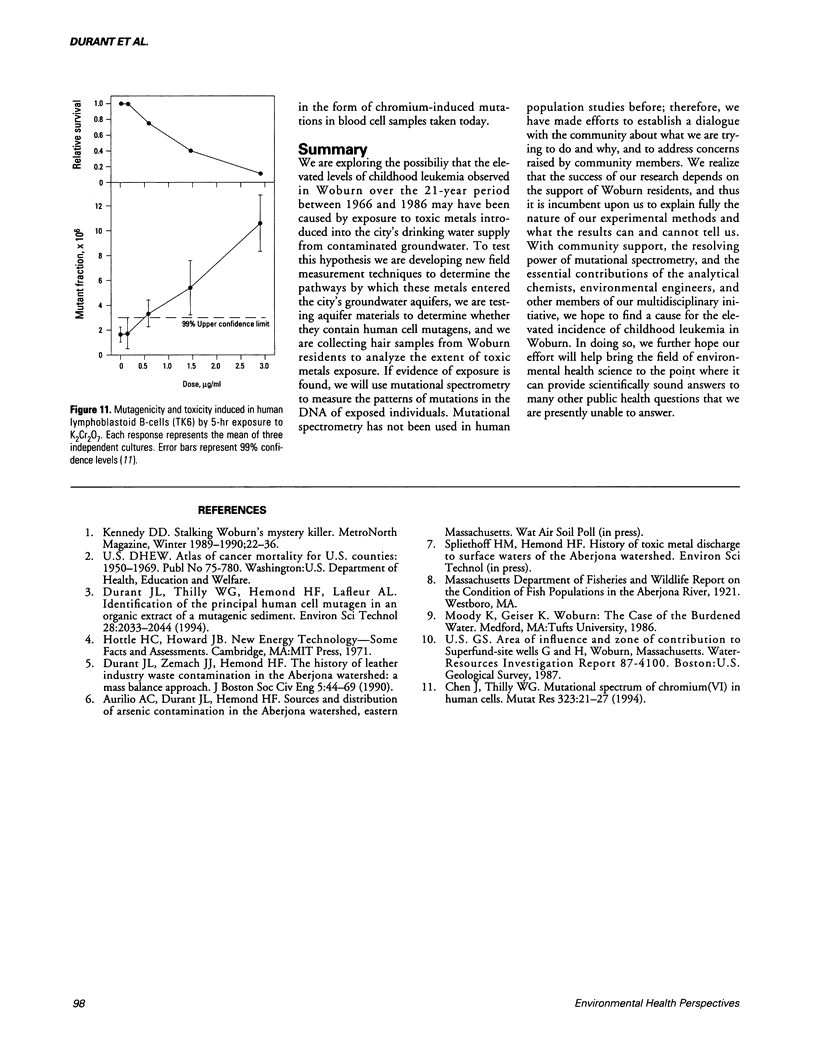Abstract
Between 1966 and 1986, the childhood leukemia rate in Woburn, Massachusetts, was 4-fold higher than the national average. A multidisciplinary research team from MIT, which is being supported by the NIEHS Superfund Basic Research Program, has explored the possible importance of a temporal correlation between the period of elevated leukemia and a previously unrecognized mobilization of toxic metals from a waste disposal site in north Woburn. Residents of Woburn may have been exposed to arsenic (70 micrograms/l) and chromium (240 micrograms/l) at levels in excess of federal drinking water standards (50 micrograms/l for each metal) by consuming municipal groundwater contaminated with these metals. Research is currently underway a) to elucidate the mechanisms and the pathways by which these metals were transported from the waste disposal site to the drinking water supply; b) to determine the identity of the principal human cell mutagens in samples of aquifer materials collected from the site of the municipal supply wells; and c) to measure the extent of exposure and genetic change in residents who consumed the contaminated well water.
Full text
PDF





Images in this article
Selected References
These references are in PubMed. This may not be the complete list of references from this article.
- Chen J., Thilly W. G. Mutational spectrum of chromium(VI) in human cells. Mutat Res. 1994 Jan-Feb;323(1-2):21–27. doi: 10.1016/0165-7992(94)90040-x. [DOI] [PubMed] [Google Scholar]



